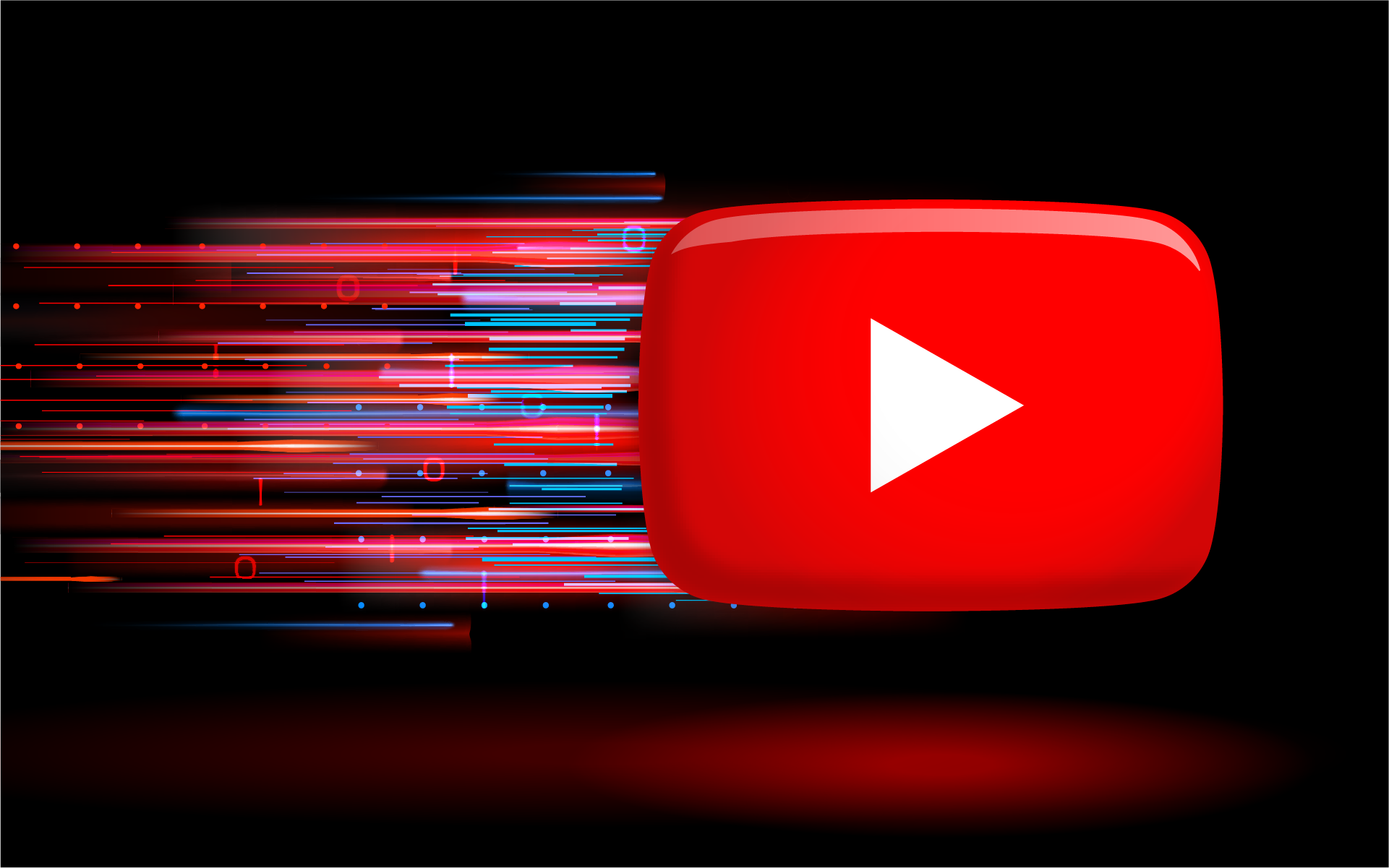Get the Right Internet Speed for Amazon Prime Video
We sift through the settings and limits so you can get the best viewing experience
Sep 22, 2025 | Share
Streaming Guides
The amount of internet speed you need for Prime Video depends on the devices you use and how many of them access the service simultaneously. Some devices support 4K Ultra HD playback, while others are locked to HD content. We’ll help you decipher everything so you can get the best experience in streaming Prime Video.
Is your Wi-Fi fast enough?
Take our speed test to see if your internet is fast enough to support your Paramount+ needs.
Download speed
000 Mbps
Upload speed
000 Mbps
Latency (ping)
00 ms
Jitter
00 ms
Prime Video speed basics
You don’t need a lot of bandwidth to stream 4K Ultra HD content from Prime Video. We know this from watching our wired Xbox Series X game console use up to 18Mbps to stream M3GAN in 4K Ultra HD (2160p).
So, based on that number, if we have five consoles streaming the same movie simultaneously, they would only use 90Mbps. Double that number to give every streamer breathing room, and you still only use up 180Mbps.
Live streams are a different story. Amazon states you need a minimum download speed of 5MB per second for HD broadcasts, which converts to 40Mbps. That’s 200Mbps total if five people watch live content simultaneously—double that to 400Mbps for breathing room.
But let’s get real here, folks. The chances of five common household members streaming 4K content or watching live events simultaneously are slim at best. Plus, not every device supports 4K playback, which we’ll get to in a bit.
Here are your minimum speed needs for Prime Video
Amazon doesn’t list recommended minimum speeds for content playback. Instead, it provides multiple support articles listing platforms with specific resolution limits. But we also discovered they’re not quite on the mark, as Amazon says web browsers support HD content but we can clearly stream movies in Full HD.
That said, the best we can do is decipher Amazon’s video quality settings based on its stated resolution limits to get an idea of the speeds you need. The only minimum speed requirements we actually dug up are for live broadcasts.
| Prime Video feed | Minimum speed* | Recommended speed | Sign up online |
|---|---|---|---|
| 2160p video (4K UHD) | 18Mbps | 36Mbps | Get Prime Video |
| 1080p video (Full HD) | 15Mbps | 30Mbps | Get Prime Video |
| 720p video (HD) | 13Mbps | 26Mbps | Get Prime Video |
| 480p video (SD) | 6Mbps | 12Mbps | Get Prime Video |
| 720p live stream | 40Mbps | 80Mbps | Get Prime Video |
| 480p live stream | 8Mbps | 16Mbps | Get Prime Video |
Recommendations from the video settings and Prime Video’s speed requirements page.
How Much Internet Speed Do You Need?
Est. Time: 60 seconds
Answer 6 questions and get a personalized internet speed recommendation!
How many people in your household use the internet/WiFi on a daily basis?
How many devices in your home connect to the internet, including tablets, gaming consoles, and smart devices?
How many people in your household work from home?
What video quality do you use for streaming TV and movies?
How intensely does your household participate in online gaming?
Does your household download large files from the cloud or via the internet?
Our experts say: The same principles apply to all video streaming apps
Even if you have individual Wi-Fi speed needs for other platforms like Paramount+, Max, Apple TV, or YouTube TV, the same rules apply. You want ample speeds to support a variety of users and tasks, and you want to be thrifty with pricing and video resolution on slower Wi-Fi.
What do you need to stream 4K Ultra HD content on Prime Video?
First, let’s start with your internet speed. Based on our tests, a 4K video in Best mode streams at up to 18Mbps. If you have five people streaming simultaneously, that’s 90Mbps. Double that number to 180Mbps just in case.
But there’s more to the equation than choosing a fast internet plan. Web browsers don’t support Prime Video’s 4K playback. The Prime Video App for Windows, MacOS, iPhone, and several other platforms doesn’t support 4K video playback either. It’s all a little confusing honestly, even more so with Amazon’s Best/Better/Good Video Quality modes thrown into the mix.
Also, you need a Wi-Fi router that can handle multiple devices simultaneously. If it can only download chunks of video to a few devices at a time, imagine the traffic jam if you have five. Generally, local congestion and Wi-Fi range are your big streaming bottleneck, not your internet plan. We tested and listed the best Wi-Fi routers for streaming to give you some ideas.
Get fiber internet or a fast cable plan for the best 4K performance
We already suggested you should have at least 200Mbps if five people stream Prime Video in 4K simultaneously. Of course, it wouldn’t hurt to go a little higher, especially if someone needs to download a 10GB file quickly.
Fiber internet is the best connection you can get, but you don’t need gigabit internet—sorry, but that’s just overkill for most homes. Honestly, as a homeowner with five streamers and gamers in the house, 500Mbps internet fits the bill just right.
Best internet plans for 4K video streaming
| Plan | Price | Speed | Type | Order online |
|---|---|---|---|---|
| AT&T Internet 500 | $65.00/mo.* | Up to 500Mbps | Fiber | |
| Frontier Fiber 500 | $44.99/mo.† | Up to 500Mbps | Fiber | View Plan |
| Optimum 500 Mbps Fiber Internet | $60.00/mo.‡ | Up to 500Mbps | Fiber | View Plan |
| Spectrum Internet Premier w/ Spectrum Advanced | $60/mo.§ for 12 mos. | Up to 500Mbps (wireless speeds may vary) | Cable, fiber | View Plan |
| Verizon Fios 500 Mbps | $74.99/mo. w/ Auto Pay | Up to 500Mbps | Fiber | View Plan |
| Xfinity 500 Mbps | $55/mo.# for 12 mos. | Up to 500Mbps | Cable | View Plan |
Read disclaimers.
Find fast internet for smooth streaming
Need a killer connection to binge The Boys on Prime Video? Search your zip code below to see what internet providers and plans are available in your area.
What if you have slow internet? Never fear—you can still watch Prime Video
Five people streaming 4K content simultaneously use around 90Mbps. That’s not a lot, but we like to double that bandwidth just in case. You can feasibly get by with a 200Mbps plan, but you may want to factor in other things that will use your total bandwidth, like silent device downloads and so on.
Best internet plans for budget Prime Video users
| Plan | Price | Speed | Type | View on provider’s site |
|---|---|---|---|---|
| AT&T Internet 300 | $55.00/mo.* | Up to 300Mbps | Fiber | |
| Frontier Fiber 200 | $29.99/mo.† | Up to 200Mbps | Fiber | View Plan |
| Optimum 300 Mbps Internet | $40.00/mo.‡ | Up to 300Mbps | Cable, fiber | View Plan |
| Spectrum Internet Advantage | $30/mo.§ for 12 mos. | Up to 100Mbps (wireless speeds may vary) | Cable, fiber | View Plan |
| Verizon Fios 300 Mbps | $49.99/mo. w/ Auto Pay | Up to 300Mbps | Fiber | View Plan |
| Xfinity 300 Mbps | $40/mo.# for 12 mos. | Up to 300Mbps | Cable | View Plan |
Read disclaimers.
Can you stream Prime Video with satellite internet?
Yes, you can stream Prime Video over a satellite internet connection, but do so sparingly since data is limited. Prime Video automatically adjusts the resolution and quality in most cases based on your device, screen, and connection, but you can manually adjust the video quality in a web browser and on some platforms.
Pro tip—Get more streaming plan recommendations
Take a look at our guide to the best internet for streaming for a breakdown of top Wi-Fi plans to meet your streaming needs.
Here’s how to adjust the video resolution for Prime Video
Despite what you may read elsewhere, you can’t adjust the video resolution. Switching the stream between the four quality modes doesn’t convert a Full HD video into an HD one. You’re definitely not going to squeeze out 4K streaming by selecting the Best video quality mode on a device or screen that only supports Full HD. Nope. Not happening.
For example, when we tested M3GAN playback on an iPhone (which has a weird 2,778 x 1,284 screen resolution), the movie remained in HD resolution no matter what visual quality setting we used—even when we disabled the Use Highest Quality on Wi-Fi feature. But we did notice a clear drop in the stream’s framerate and fidelity.
In other words, the Best mode produced a sharp image and fluid motions, while the Data Saver mode was less sharp and movements were less smooth. But you’ll never see a higher video resolution until Amazon updates the Prime Video App with support for Full HD video playback or better.
In most cases, you can’t manually adjust the video quality anyway (despite what other guides tell you). We noticed a few exceptions, however, in desktop web browsers and the apps for iPhone and iPad. We presume Amazon is quietly removing the video quality setting on devices that don’t use cellular data.
In a web browser:
Step 1: Start the video.
Step 2: Move the mouse cursor over the video to activate the overlay.
Step 3: Click on the Gear icon.
Step 4: Select Best, Better, or Good on the drop-down Video Quality menu.
In the Prime Video App:
Step 1: Tap on your profile icon.
Step 2: Tap on the gear icon.
Step 3: Tap on Streaming & Downloading.
Step 4: Tap on Streaming Quality.
Step 5: Select Best, Better, Good, or Data Saver*.
* The Data Saver mode presumably only appears on devices that use cellular data, like smartphones and 5G-capable tablets.
Choose the best Prime Video plan
You can get Prime Video two ways: for free if you subscribe to Amazon Prime, or as a standalone streaming service if you don’t.
| Plan | Price | # of simultaneous streams | # of simultaneous downloads | Video formats | Sign up online |
|---|---|---|---|---|---|
| Amazon Prime | $14.99/mo. or $139.00/yr. | 4K Ultra HD | Get Amazon Prime | ||
| Prime Video | $8.99/mo. | 4K Ultra HD | Get Prime Video |
The chart is based on streaming and downloading content from one account. Here are the major differences between the full Standard and Mobile plans:
| Standard Edition | Mobile Edition | |
|---|---|---|
| # of devices: | ||
| Platforms: |
Mobile Edition subscribers can upgrade to the full Standard Edition plan to stream and download more content. Currently, Prime Video Mobile Edition is not offered in the US.
FAQ about Prime Video
What's the best router for streaming Prime Video?
I have the best internet and equipment. Why is Prime Video so choppy?
What does the Video Quality setting do?
What's the maximum resolution I can get on my device?
How much data does Prime Video use?
What free channels do you get with Prime Video?
What premium channels can you add to Prime Video?
Disclaimers
Best internet plans for 4K streaming (return to table)
Data effective 2/04/2025. Offers and availability may vary by location and are subject to change.
* Price after $5/mo Autopay & Paperless bill discount (w/in 2 bills). Plus taxes & fees. Monthly State Cost Recovery Charge in TX, OH, NV applies. One time install chrg may apply. Ltd. avail/areas. Call or go to www.fiber.att.com to see if you qualify.
† w/ Auto Pay & Paperless Bill. Max wired speed 500/500 Mbps. Wi-Fi, actual & average speeds vary. One-time charges apply.
‡ w/ $10/mo. elig. Auto Pay & Paperless Bill. Wired connection. WiFi speeds may vary. Not available in all areas. Disney+, Hulu Bundle Basic avail. w/ 500 Mbps Internet and above. After promo period, plan auto-renews at $10.99/mo. Offer will not replace existing subscriptions. Add’l terms apply. Unlimited Mobile line w/ Promo Code HEYITSFREE. Plus taxes & fees. Savings via monthly bill credits. Elig. cust. only. Paperless Bill & Auto Pay req’d. Terms Apply.
§ Limited time offer; subject to change; new residential customers only (no Spectrum services within past 30 days) and in good standing with Spectrum. Taxes and fees extra in select states. SPECTRUM INTERNET: Standard rates apply after promo period. Additional charge for installation. Speeds based on wired connection. Actual speeds (including wireless) vary and are not guaranteed. Gig capable modem required for Gig speed. For a list of Gig capable modems, visit spectrum.net/modem. Services subject to all applicable service terms and conditions, subject to change. Not available in all areas. Restrictions apply.
# For 12 months, no term contract. Restrictions apply. Autopay w/ stored bank account and paperless billing req’d. Taxes and fees extra and subj. to change. Reduced speeds after 30 GB of usage/line. Data thresholds may vary.
Best internet plans for budget users (return to table)
Data effective 2/04/2025. Offers and availability may vary by location and are subject to change.
* Price after $5/mo Autopay & Paperless bill discount (w/in 2 bills). Plus taxes & fees. Monthly State Cost Recovery Charge in TX, OH, NV applies. One time install chrg may apply. Ltd. avail/areas. Call or go to www.fiber.att.com to see if you qualify.
† w/ Auto Pay & Paperless Bill. Max wired speed 200/200 Mbps. Wi-Fi, actual & average speeds vary. One-time charges apply.
‡ w/ $10/mo. elig. Auto Pay & Paperless Bill. Wired connection. WiFi speeds may vary. Not available in all areas.
§ Offer based on eligibility requirements. Standard rates apply after promo period. Additional charge for installation. Speeds based on wired connection. Actual speeds (including wireless) vary and are not guaranteed. Services subject to all applicable service terms and conditions, subject to change. Not available in all areas. Restrictions apply.
# For 12 months, no term contract. Restrictions apply. Autopay w/ stored bank account and paperless billing req’d. Taxes and fees extra and subj. to change. Reduced speeds after 30 GB of usage/line. Data thresholds may vary.
Author - Kevin Parrish
Kevin Parrish has more than a decade of experience working as a writer, editor, and product tester. He began writing about computer hardware and soon branched out to other devices and services such as networking equipment, phones and tablets, game consoles, and other internet-connected devices. His work has appeared in Tom’s Hardware, Tom's Guide, Maximum PC, Digital Trends, Android Authority, How-To Geek, Lifewire, and others. At HighSpeedInternet.com, he focuses on network equipment testing and review.




